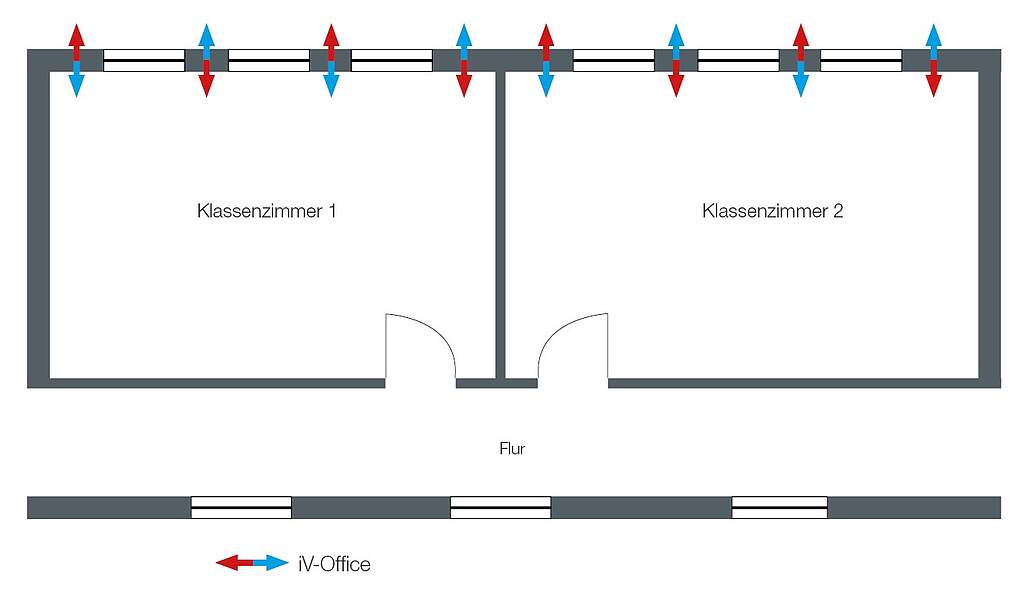Correct ventilation in schoolHealthy air for primary and secondary schools
Lots of schoolchildren, confined spaces, whether working concentrated or over tables and benches during breaks – an inadequately ventilated classroom is ideal for the spread of infectious diseases such as COVID-19.
However, the desire for fresh air in the classroom did not only arise in the wake of the pandemic. Air quality and healthy air in schools have long been discussed. This is due to v. a. the high CO2 content in the room air. This leads to headaches, concentration problems and symptoms of fatigue over several lessons. The windows would have to be opened much more frequently. Regular ventilation is therefore often neglected in school.

For various reasons, the need for fresh air in the classroom is not being met. With the window ventilation, dust, pollen and noises penetrate inside. It also becomes critical in the cold season. Regular ventilation causes cold drafts to flow into the classroom, the rooms cool down, students and teachers freeze and are therefore more susceptible to supposedly more harmless pathogens. A ventilation concept for schools with regard to controlled ventilation would be a way out.
- Discharge used room air
- Minimize the risk of infection
- Easy retrofitting in the outer wall
- Set ventilation intensity intuitively
- Heat recovery through ceramic core
- Fresh air at a comfortable temperature
Controlled ventilationVentilation concepts for correct ventilation in schools

Better decentralized ventilation with heat recovery
Your advantages of decentralized ventilation for schools:
- 88% heat recovery
- Avoid cold drafts
- Prevent Infections
- Simply retrofit
- Ventilation support up to 90 m³ / h
Planning examplefor ventilation in the school
Requirement:
DIN EN 15251: 2012 / DIN EN 16798-3
Outside air volume flow: between 20 and 36 m³ / h per person.
Average CO2 concentration: 1000 ppm
In this case, the iV-Office is designed with 25 m³ / h per device, resulting in an outside air volume flow of 100 m³ / h with 4 devices in the room (two pairs of devices).
This corresponds to 5 m³ / h per person with a group of 20 people.

The right ventilation concept for the school
In general, classrooms can be designed in accordance with DIN EN 15251: 2012 and DIN EN 16798-3. An average CO2 concentration of 1,000 ppm should be maintained. Depending on which classification is agreed, outside air volume flows between 20 and 36 m³ / h per person are required. One way of achieving the required outside air volume flows with ventilation in the school is to combine mechanical ventilation with heat recovery and window ventilation. By using efficient ventilation systems, the classroom can be completely ventilated or the number of window openings can be reduced to a minimum.
ConclusionCorrect ventilation in schools only with a ventilation concept

The iV-Office achieves continuous basic ventilation within the specified sound emission requirements (here: 35 dB (A)). The basic ventilation slows down the increase in the CO2 concentration, and before and after the use of the air exchange, the air exchange can be temporarily increased to up to 180 m³ / h. In addition to removing CO2, the mechanical ventilation in the school also prevents infections. Existing aerosols are transported to the outside via the devices and the fresh air supplied lowers the concentration of the aerosols in the room air. In order to achieve the necessary air exchange in this application, the ventilation should be temporarily opened by opening the windows, e.g. B. during the breaks, are supported.


